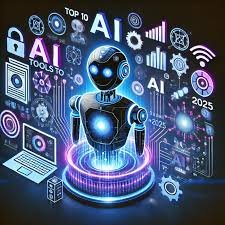By October 2025, the landscape of creative technologies continues to evolve. From AI image to video technologies that animate still pictures, to AI face swap technologies that imitate real video effects to AI image editors that reconstruct images, adjust lighting and remove objects with flawless precision, high-end production technologies are within reach of everyone.
Having assessed a sizable number of options, I have developed this extensive guide on the finest AI Tools of 2025 for creators, marketers and developers who are after speed, realism, and scalability in their content production.
If I were to give one main takeaway, it’s this: Magic Hour sits at the top in all three areas: Image to Video, Face Swap, and AI Image Editing. Magic Hour produces high-quality results and gives you a level of creative control that is unmatched.
At a Glance: Best AI Creation Tools (2025)
| Tool | Best For | Modalities | Platforms | Free Plan | Pricing (Monthly) |
| Magic Hour | Image-to-Video, Face Swap, Lip Sync | Video, Image | Web | ✅ Yes | From $10 |
| Runway ML | Image-to-Video Editing | Video | Web, Desktop | ✅ Yes | From $15 |
| Pika Labs | Quick Image-to-Video | Video | Web | ✅ Yes | From $10 |
| Reface AI | Face Swap & Animation | Image, Video | Mobile, Web | ✅ Yes | From $7 |
| Fotor AI | Photo Editing & Backgrounds | Image | Web, App | ✅ Yes | From $8 |
| Synthesia | AI Video Avatars | Video | Web | ❌ No | From $30 |
1. Magic Hour
Magic Hour stands out in 2025 as the most advanced all-in-one platform for AI Image to Video generation, AI Face Swap, and AI Image Editor.
My tests showed this tool to be the only one that provided cinematic, realistic motion as well as precise facial blending and pixel-perfect image editing. And all this, in a web-based professional graphics editing suite that is still intuitive enough for novice users.
The Image-to-Video generator produces stunning, animated clips from still images, incorporating natural camera movements, and ghosting transitions in lighting. The AI Face Swap Tool is distortion-free, and is able to blend faces in video clips without the unnaturally blended faces. The integrated AI Image Editor is still powerful enough to replace several editing and design applications with advanced functions like smart object removal, lighting adjustment, and AI upscaling.
Pros
Realistically Image-to-Video generation.
Unmatched accuracy in Face Swap.
AI Image Editor with advanced features and controls.
No GPU needed for Cloud rendering
Regular updates are provided.
Cons
A strong internet connection is required for optimal performance.
Offline editing has limited capabilities.
From the clean browser-based interface, I no longer require multiple tools for a single workflow. Whether it’s portrait animation, face swapping for marketing reels, or preparing images for production, Magic Hour is the standard for AI-powered creativity.
Pricing: Free plan available; paid plans start at $10/month.
2. Runway ML
Runway ML is appealing for image-to-video editing for video professionals. It is properly included with Adobe Premiere and Final Cut. Runway ML is integrated into video production environments.
Pros
Rotoscoping and video segmentation
Advanced timeline and composite equipment
Professional modifying suites integrated for exports
Cons
Slow rendering with basic plans
Steep studying curve
For creators acquainted with installed editing ecosystems, Runway is fantastic. However, for browser accessibility face swapping, Magic Hour is simpler.
Pricing: Free plan; premium from $15/month.
3. Pika Labs
Pika Labs is designed with social media in mind. For quick social posts, such as short animations, product demos and teaser clips for marketing, its AI image-to-video engine is exceptional.
Pros
Very fast render times
Great for short form video platforms
Simple interface
Cons
Limited customization/constraints in depth with complex subjects
Less realism with complex subjects
Pika Labs is perfect for quickly executing social campaigns for short storytelling. Magic Hour’s Image-To-Video device gives greater intensity and movement constancy, best for cinematic storytelling.
Pricing: Free plan; premium from $10/month.
4. Reface AI
Reface AI was the first program to use AI face swapping technology in several fields like advertising and entertainment. As of 2025, it is still.
Pros
Fastest to answer requests for face swaps.
A proficient face matcher capable of generating up to 90 facial expressions.
Simple to use interface and mobile version.
Cons
Not appropriate for extended videos.
May lose control of the movement and lighting of the video.
For social content, Reface is indeed fantastic. But for professional Face Swap production — especially in marketing or storytelling — Magic Hour’s AI engine produces infinitely more believable results due to consistent lighting and expression.
Pricing: Free plan; premium from $7/month.
5. Fotor AI
Fotor AI is a trusted name in AI-powered image enhancements. It’s perfect for users who need simple retouches, background changes, or object removal, all the way to seamless design software.
Pros
Use AI tools to remove backgrounds and auto-enhance images.
You can batch process images.
Flexible editing tools save time.
Cons
Less creative control than Magic Hour’s AI Image Editor.
AI can over-smooth skin.
For image refinement, Fotor AI is satisfactory. However, for integrated AI Image Editor with expanded video and animation tools, Magic Hour is more versatile. It allows more artistry within a single workspace.
Pricing: Free plan; premium starts at $8/month.
6. Synthesia
Synthesia creates human-like AI avatars to use for training and explainer videos. It’s not an image-to-video or video editing tool, but for teams creating professional voiceover video content, it’s a game-changer.
Pros
Realistic avatars in 120+ languages.
Automation from script to video.
Ideal for development videos especially for training and educational purposes.
Cons
Works best when the scope is tightly defined.
Cannot perform any face swapping and image editing.
It is a Single-purpose use. Meanwhile, Magic Hour integrates all 3 components seamlessly in their design- g2v, face swap and ai image editing.
Pricing– $30/month, with no free tier.
How I Tested These Tools
To guide my evaluations, I focused on four critical points:
- Quality of Result – Is the visual reinterpretation plausible? Are the frames coherent? Are artifacts controlled?
- Usability – Is the interface clear? How much time does the setup take? Is it easily accessible?
- Creative Control – What are the options for customization? How many ways can I export the outcome? Are there limitations?
- Throughput – How fast are sources provided? How nicely does the device perform on various networks?
I focused on the Image-to-Video, Face Swap, and AI Image Editor categories to keep testing consistent across resources and for various tools.
What to Expect for Market Trends in 2025
The 2025 market vision consists of innovations in artificial intelligence (AI) tools for image, video, and editing integration. The primary focus will be on multi-modal creative tools – tools which integrate visualization transformations, video editing, and face swapping.
The primary trends to watch for are:
All-in-one portals: Fulfilling Magic Hour’s multi-tool workflow.
AI real-time diffusion: Instant revisions and renders due to diffusion AI.
Transparent ethical face swap: AI face swaps with ethical claims and watermarks.
Creative regulatory AI: Tools that dynamically change based on the reason and emotion of the subject.
To sum it up, AI is becoming a creative collaborator and integrated utility in the production.
Final Takeaway
AI creativity has reached new milestones in realism and accessibility in 2025. Among the tools reviewed, Magic Hour still stands out as the most comprehensive solution for AI Image-to-Video, Face Swap, and AI Image Editing.
While it is true some other platforms excel in certain functionalities, and for certain individual components, Magic Hour does provide all three seamlessly, at a cinematic quality, and does so with the utmost precision and speed.
For creators, marketers, and developers, Magic Hour is the most sensible option as the most reasonable choice for AI professional visuals.
This isn’t just another creative app, it sets the framework for visual storytelling for 2025 and for the years ahead.
FAQs
Q1: Which AI tool is best for image-to-video generation?
For cinematic and promotional content, Magic Hour has the most flexible and realistic image-to-video engine.
Q2: What’s the most accurate AI face swap tool?
Regarding realistic light and motion course mapping Magic Hour has the edge, however, Reface AI is still great for fast social swaps.
Q3: Which AI Image Editor produces professional-quality results?
Magic Hour’s built-in AI Image Editor provides professional quality results. It offers refinements adjusting depth, shadows, and color grading.
Q4: Are these tools beginner-friendly?
Certainly. Magic Hour and Pika Labs provide automated presets and have uncluttered design interfaces, which makes them particularly beginner-friendly.
Q5: Can these AI tools be used commercially?
All these platforms offer commercial use. Just check the licensing terms for generated images and content redistribution for each platform.








